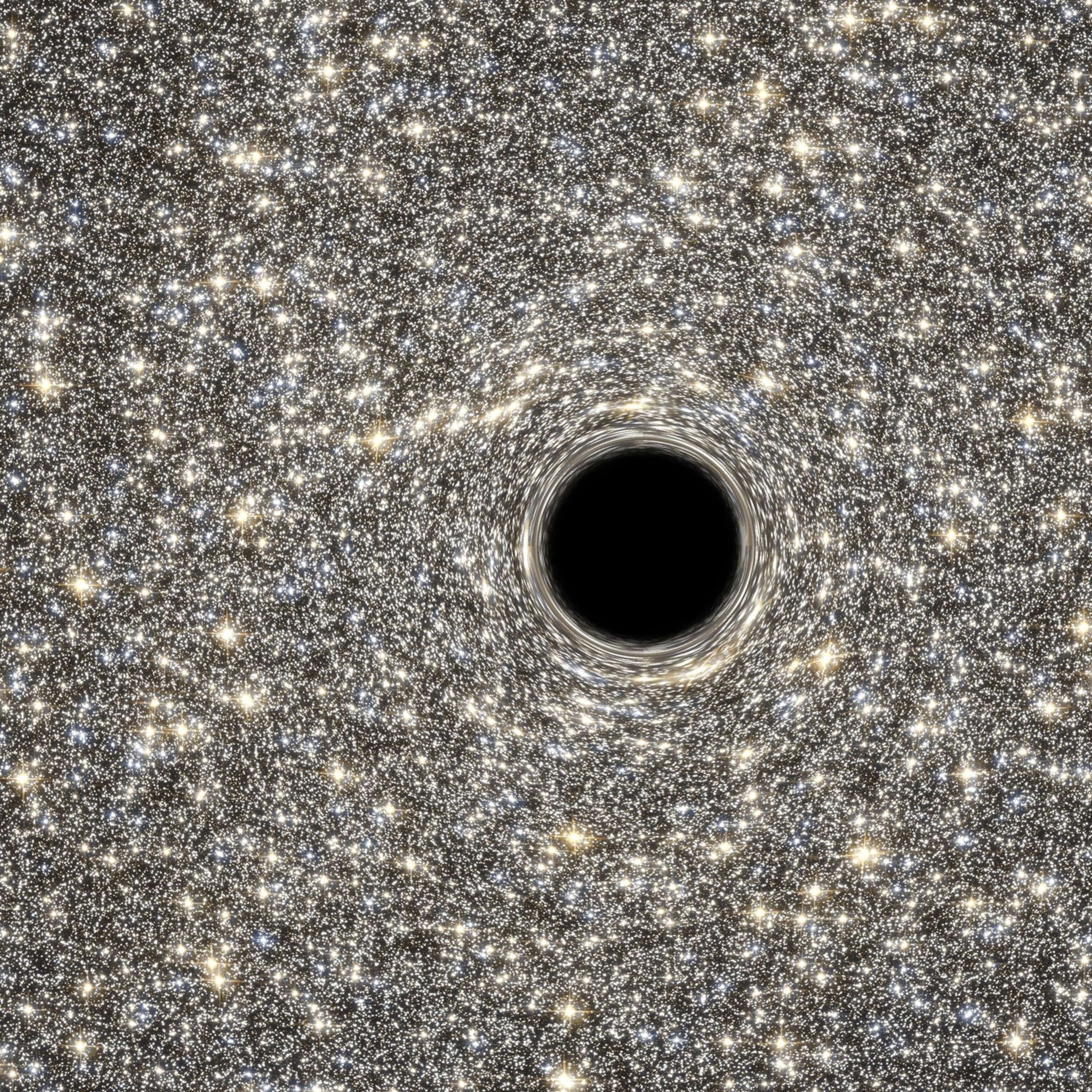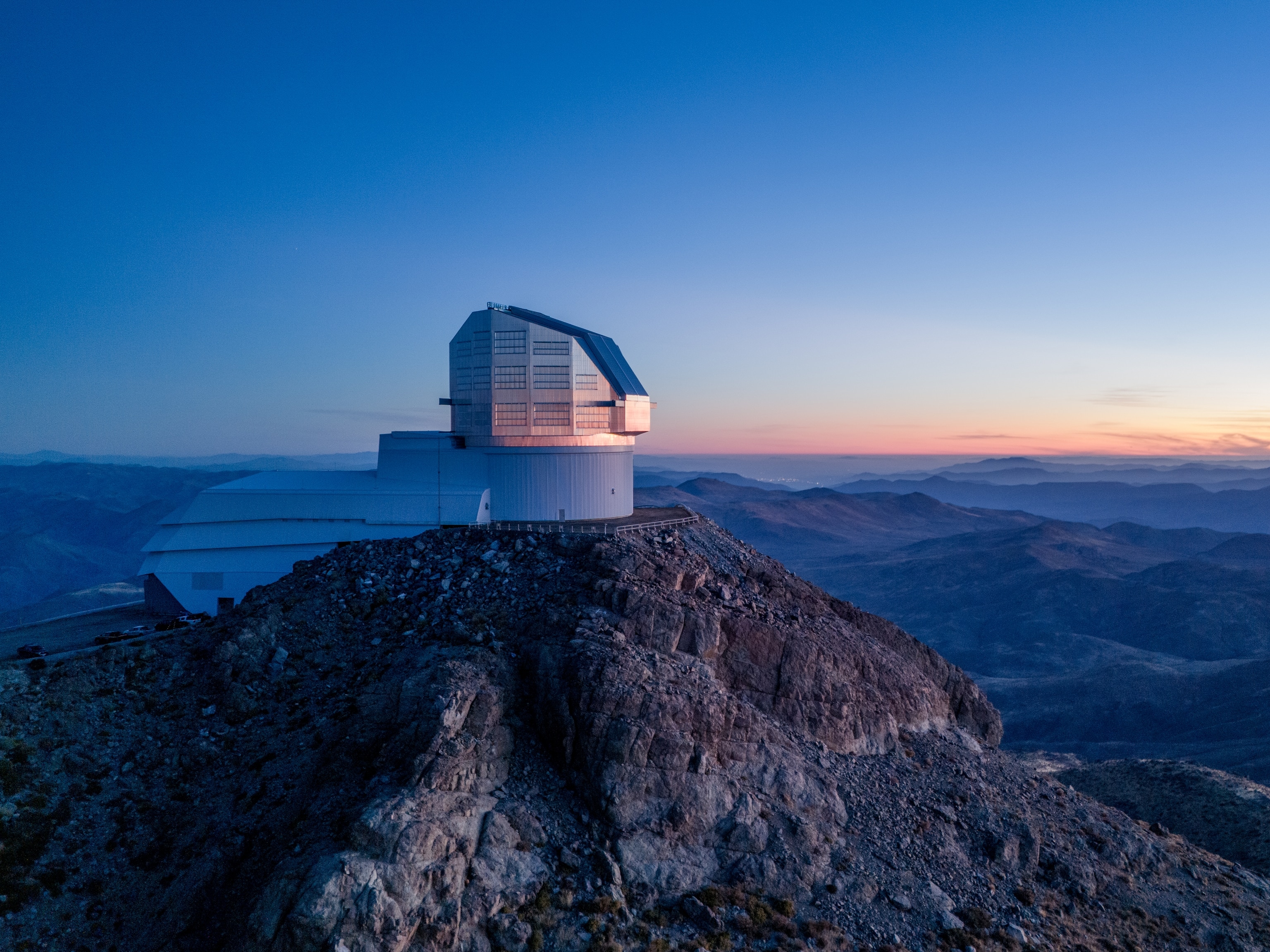
Time Travel Impossible, Mini "Big Bang" Hints
A new material that simulates the motion of particles after the big bang shows that time can move in just one direction, physicists say.
You may want to put plans for building that flux capacitor on hold: A "toy" big bang created in the lab suggests time travel may not be possible after all.
In a new study, Igor Smolyaninov and Yu-Ju Hung of the University of Maryland simulated the birth of the universe using advanced materials that can bend light in unusual ways.
Their device supports the idea that the forward marching "arrow of time" cannot curve back on itself to undo events that have already happened.
So far time travel hasn't been possible in real life, Smolyaninov said, and this new material suggests it won't ever be possible. (Related: "Time Will End in Five Billion Years, Physicists Predict.")
New Material Stands in for Space and Time
The new big bang simulator is tiny—just fractions of an inch (20 micrometers) wide. It's built from alternating strips of gold and plastic, pieced together in such a way as to create a metamaterial, an engineered substance that can manipulate light.
In the last few years researchers have used metamaterials to create "science fiction" devices such as invisibility cloaks and "superlenses," which allow scientists to "see" structures smaller than the wavelengths of visible light.
Metamaterials have also piqued the interest of astrophysicists, who have recently used the exotic substances to make artificial black holes and multiverse simulators. (Also see "Universe's Existence May Be Explained by New Material.")
According to Smolyaninov and Hung, their metamaterial is a "reasonable" representation of our universe—specifically the early universe at the time of the big bang, some 13.7 billion years ago.
Because of the unique way their metamaterial bends light, the equations that describe the passage of a particle through time are similar to the ones that describe the motion of photons and similar quantum particles called plasmons—created by waves of free electrons—through the material.
"In this type of material, the motion of [plasmons] looks very much like the motion of particles in Minkowski space," Smolyaninov said, referring to a theoretical model of spacetime that physicists sometimes employ to study the universe.
The metamaterial device thus serves as a model for our four-dimensional universe: Horizontal motion through the plane of the metamaterial is roughly analogous to movement through the three dimensions of space, while vertical motion represents movement through time.
Universe Too Jumbled for Time to Reverse?
For the experiment, the scientists used a green laser beam to trigger a big bang-like event in the metamaterial. The laser light caused the gold atoms to generate a burst of plasmons.
These plasmons radiated outward from a single point, just as scientists think particles of matter radiated from a single point following the big bang. (Related: "Big Bang Poured Out 'Liquid' Universe, Atom Smasher Hints.")
The paths of the radiating plasmons became sloppier the farther out they moved, the scientists found. This is consistent with the second law of thermodynamics, which states that—barring any kind of intervention—systems will tend to become more disorderly with the passage of time.
Scientists call the measure of disorder in a system entropy, so another way to state the second law of thermodynamics is to say that entropy tends to increase with time in our universe.
In the toy model, the equivalent of time travel would be for a plasmons to complete a loop that runs along the exact same path it had previously traveled. But once the plasmon has strayed from that path—due in part to entropy—making the loop is no longer possible.
The result, described in a paper published this month on arXiv.org, suggests that particles in our universe may also be unable to move backward in time.
But Smolyaninov concedes that the experiment is far from perfect: "I'm not sure how much of this applies to real life."
Toy Big Bang "Too Simplistic"?
Andreas Albrecht, a cosmologist at the University of California, Davis, who was not involved in the study, is doubtful that the metamaterial is an accurate enough representation of the early universe.
"Minkowski space is space with no matter in it," Albrecht said. "But there is stuff in the universe, so we know it's not Minkowski space."
Albrecht called the team's big bang simulator a "cool" achievement, but he doesn't think it will teach physicists anything about the universe that wasn't already known from observational data or from models based on equations and computer simulations.
"We have much better models of the universe that we can [create with] normal computers," Albrecht said, "so I don't feel this [material] offers any insight into the universe that cannot be had more directly."
Lawrence Krauss, a theoretical physicist at Arizona State University, is also skeptical of the finding, saying that the new big bang model is too simplistic.
"I don't think that [this model] illuminates the more vexing question of what is possible in the real universe, where arbitrary equations of state might be possible," Krauss said in an email, referring to the different equations physicists use to describe the state of matter during the universe's epochs—equations that aren't accounted for in the toy model.
Time Travel May Occur Unnoticed
While the new experiment—and our everyday experience—appear to rule out the possibility of time travel, there are still a lot of unknowns about the universe, and physicists can imagine scenarios in which time travel is possible.
(Also see "Every Black Hole Contains Another Universe?")
For example, the laws of physics might vary depending on where one is in the cosmos, and Earth could happen to be in a patch of the universe where entropy increases, which would make time travel impossible.
"Perhaps life clings to these patches where entropy is going up, since we need the arrow of time to exist," UC Davis's Albrecht said. The reason for time, as Albert Einstein once quipped, "is so that everything doesn't happen at once."
Alternatively, Albrecht said, "you could imagine a universe where entropy cycles up and then down again."
If entropy is not constant in this hypothetical universe, he said, then the arrow of time could run backward, and events such as a broken cup being made whole again or humans aging in reverse would not only be possible but natural.
The inhabitants of such a universe would probably not even notice that anything was amiss.
"If this were to happen," Albrecht said, "we would just change our minds about what is past and what is future and not notice anything special."








